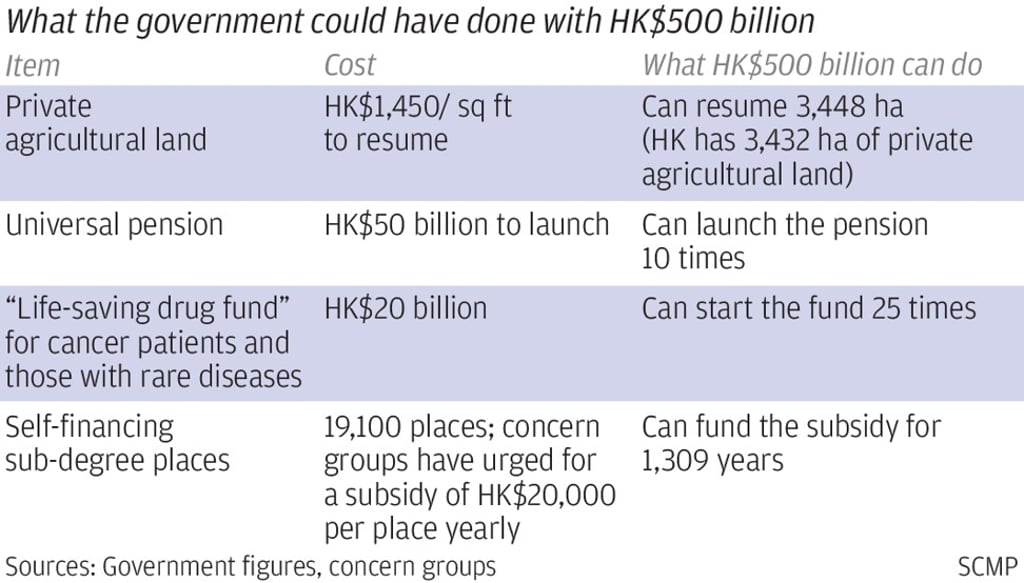Advertisement
Is Hong Kong ready to splash HK$500 billion (or more) on Lantau Tomorrow Vision reclamation?
- Carrie Lam’s plan to create a cluster of islands as the city’s future housing and business centre has drawn criticism since she announced it last month
- This three-part series will look at questions that need to be answered, starting with an analysis of costs
Reading Time:3 minutes
Why you can trust SCMP

For HK$500 billion (US$64 billion), Hong Kong could pay for a universal pension system 10 times over, or buy up all its damaged farmland for better planning.
Instead, the government intends to use this amount – equivalent to half of its fiscal reserves – to build a group of islands to house 1.1 million people.
The HK$500 billion estimate for the 1,700-hectare development came from a government source, but some concern groups estimated the cost could balloon to HK$1 trillion or even more.
Advertisement
The astronomical numbers have sparked an uproar over the proposed project to the east of Lantau Island, with detractors likening it to “pouring money into the sea” and supporters saying it would be a profitable investment.
Advertisement
Experts said many varying factors could affect costs substantially, and while supporters want an official feasibility study, civil groups urged the government to think twice.
Advertisement
Select Voice
Choose your listening speed
Get through articles 2x faster
1.25x
250 WPM
Slow
Average
Fast
1.25x
